Poaching eggs can be a daunting culinary task for many, despite its simplicity. While the concept seems straightforward, achieving that perfect poached egg requires precision and technique. In this article, we will explore ten common mistakes people make while poaching eggs, providing insights on how to avoid them and ensuring your breakfast is nothing short of delightful.
Using Fresh Eggs
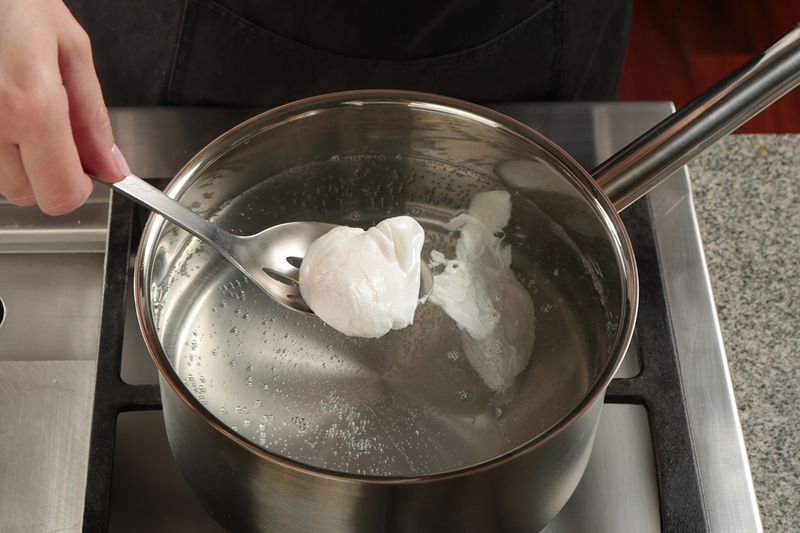
The freshness of an egg is crucial when poaching. Fresh eggs have firmer whites that hold together better in water. If an egg is too old, the whites become runny, spreading out and creating a mess in the pot.
To test egg freshness, gently place it in water. A fresh egg will sink, while an older egg will float. This simple test can save you from disappointment.
Ensuring your eggs are fresh is the first step to producing that perfectly round, delectable poached egg. Don’t overlook this essential starting point.
Incorrect Water Temperature

The water temperature is pivotal in poaching eggs. Water that’s too hot will cook eggs too quickly, making them tough. Conversely, water that’s too cold will not set the whites properly.
The ideal temperature for poaching is around 180°F to 190°F, where gentle bubbles break the surface. A thermometer can be your best friend here.
By maintaining the right temperature, you’ll achieve that smooth, tender poached egg, elevating your brunch game to new heights. Embrace precision and watch your results improve dramatically.
Not Using Vinegar
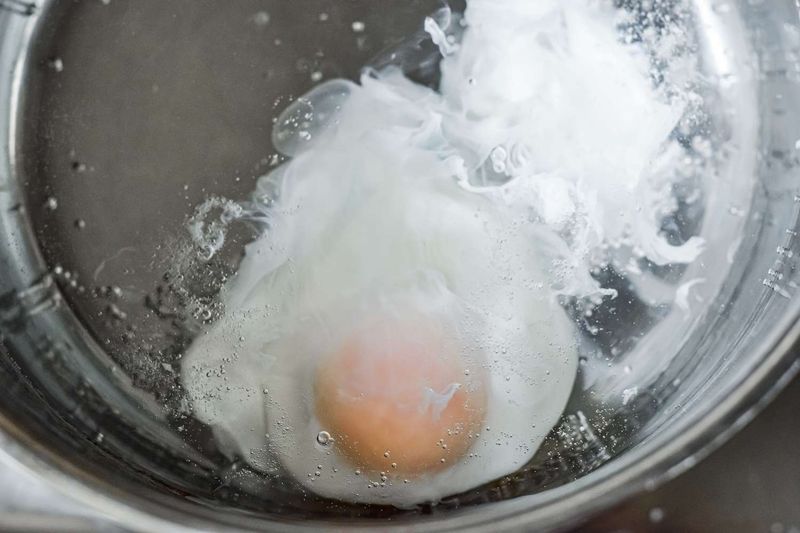
Adding a bit of vinegar to the poaching water can help the egg whites coagulate quickly, preventing them from spreading. Some might worry about the vinegar taste, but it’s often unnoticeable.
A tablespoon of vinegar in a liter of water can make a significant difference. This small addition helps achieve that restaurant-quality poached egg.
Without vinegar, you might find your eggs looking more like a cloudy mess than an appetizing dish. Consider this simple trick to improve your poaching technique.
Cracking Eggs Directly Into Water
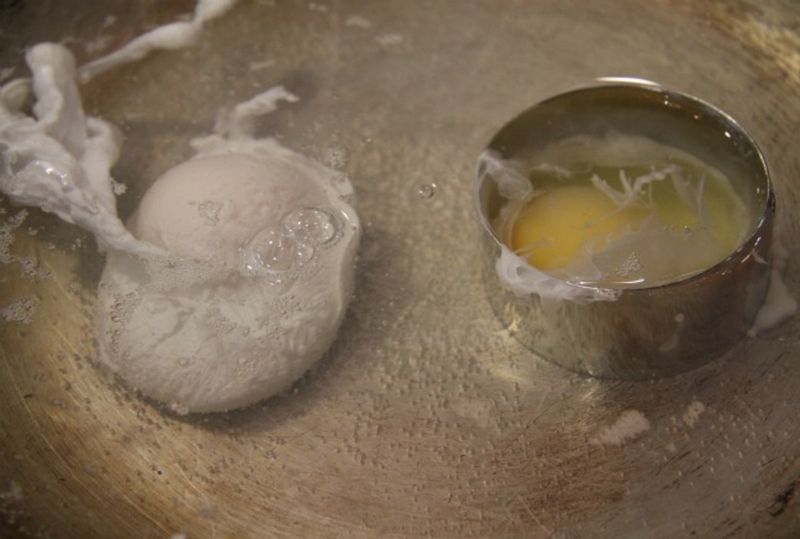
Cracking eggs directly into boiling water can lead to disaster. Whites tend to spread uncontrollably without proper guidance.
Instead, crack the egg into a small bowl first. This way, you can gently slide it into the water. This technique offers more control.
Avoid chaotic poaching experiences by taking this small preparatory step. It ensures the yolk stays intact and the whites form a neat package around it.
Using Too Much Water

Using an excessive amount of water can cause the eggs to move too much, losing their shape. The depth should be just enough to cover the eggs, about 3-4 inches.
This allows the eggs to settle without being tossed around. A calm environment encourages a neat result.
Finding the right balance in water volume helps maintain the poached egg’s integrity, leading to a more satisfying visual and taste experience. It’s a small detail that makes a world of difference.
Rushing the Process
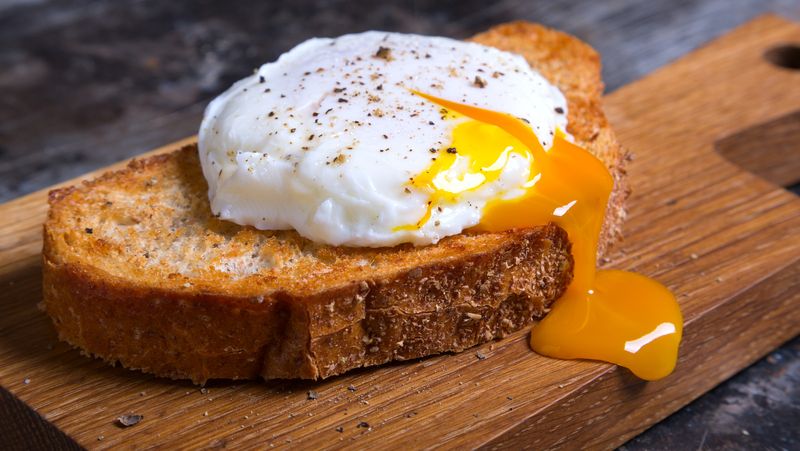
Patience is key in poaching eggs. Rushing can lead to undercooked whites and overcooked yolks, neither of which is desirable.
Give the eggs about 3-4 minutes to poach. This ensures the whites are fully set while the yolk remains deliciously runny.
Embrace the process, allowing the eggs to cook at their own pace. This mindfulness in cooking translates to a more enjoyable dining experience.
Not Drying the Eggs

Once poached, eggs need proper drying to avoid a watery mess on the plate. Excess moisture can interfere with the dish’s taste and texture.
Place the poached eggs on a paper towel to gently absorb any residual water. This step is crucial for serving.
Drying the eggs ensures a clean presentation and a more delightful taste, showcasing the effort put into achieving that perfect poach.
Ignoring Egg Size

Egg size can significantly impact poaching time. Larger eggs require more time to cook than smaller ones.
Understanding this difference helps avoid overcooking or undercooking. Adjust your cooking time based on the size of the eggs.
By acknowledging this variable, you can better control the outcome, ensuring every poached egg turns out just right, enhancing your culinary prowess.
Forgetting to Swirl the Water
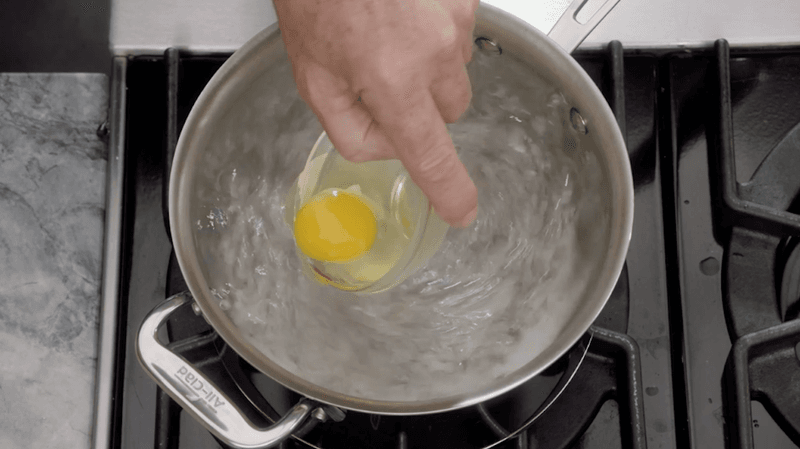
Swirling the water before adding the egg helps gather the whites around the yolk, forming a neat package.
This vortex technique is especially useful when poaching multiple eggs. It prevents them from sticking together.
Incorporating this simple motion can elevate your poached eggs from ordinary to extraordinary, providing a professional finish every time.
Not Seasoning Before Serving

Seasoning is essential to elevate the taste of a poached egg. Before serving, sprinkle some salt and pepper for added flavor.
A pinch of seasoning enhances the natural taste, transforming a bland egg into a savory delight.
Don’t let your poached eggs go unseasoned. This final touch is as important as the poaching process itself, ensuring a memorable meal.
Leave a comment